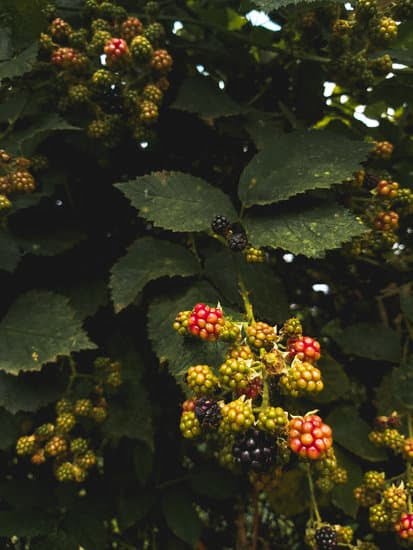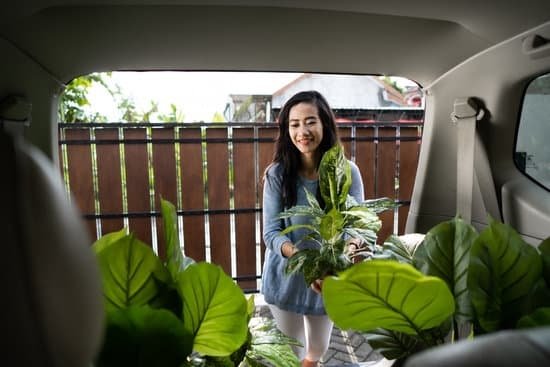Are you looking to create a vibrant and green oasis in your Indian apartment? If so, you’ve come to the right place. In this article, we will discuss various apartment gardening ideas in India to help you transform your limited space into a flourishing garden.
From the best plants for apartment gardening to DIY vertical gardening ideas, we have everything you need to kickstart your urban gardening journey. Whether you’re a beginner or an experienced gardener, these tips and tricks are sure to inspire and guide you in creating a beautiful green space within the confines of your Indian home.
Apartment gardening is becoming increasingly popular in India due to the limited outdoor spaces in urban areas. This growing trend not only allows individuals to reconnect with nature but also comes with a plethora of benefits.
In this article, we will explore the advantages of apartment gardening in India and how it can positively impact your physical and mental well-being. Additionally, we will provide valuable insights into overcoming challenges that are commonly faced when attempting to cultivate a garden within the constraints of an Indian apartment.
From herbs and vegetables to ornamental plants, there is an array of options for apartment gardening in India. Regardless of space limitations, anyone can enjoy the beauty and benefits of having their own indoor garden.
By incorporating our tips for small space gardening and DIY vertical gardening ideas specific to Indian apartments, you’ll be able to make the most out of your limited space while indulging in the joy of nurturing living plants indoors. So let’s dive into the world of apartment gardening and unleash our creativity while surrounded by lush greenery within our very own homes.
Benefits of Apartment Gardening in India
Apartment gardening in India offers a multitude of benefits that go beyond just adding greenery to your living space. From reducing stress to providing access to fresh produce, the advantages of apartment gardening are numerous and significant.
Health Benefits
One of the key benefits of apartment gardening in India is the positive impact it can have on your health. Spending time tending to plants can help reduce stress and anxiety, providing a much-needed break from the hustle and bustle of city life. Additionally, growing your own herbs and vegetables can encourage a healthier diet, as you will have easy access to fresh, organic produce right at home.
Environmental Benefits
Apartment gardening also contributes to environmental sustainability in urban areas. By cultivating plants indoors, you are helping to improve air quality, reduce carbon footprint, and create a more eco-friendly living environment. This is especially important in densely populated cities where green spaces are limited.
Community Benefits
In addition to personal health and environmental benefits, apartment gardening can also foster a sense of community among residents. Shared gardens or rooftop spaces provide opportunities for neighbors to come together and collaborate on gardening projects, creating a sense of unity and shared purpose within the building or complex.
Overall, the benefits of apartment gardening in India extend far beyond aesthetic appeal, making it an attractive option for urban dwellers looking to enhance their living environment.
Best Plants for Apartment Gardening in India
When it comes to apartment gardening in India, choosing the right plants is crucial for success. With limited space and environmental factors to consider, it’s important to select plants that thrive in these conditions. Here are some of the best plants for apartment gardening in India:
- Herbs: Herbs like basil, mint, and coriander are not only easy to grow but also useful for cooking. They can be grown in small pots on windowsills or balconies, making them perfect for apartment gardening.
- Succulents: Succulents are low-maintenance plants that require minimal watering and sunlight. They are ideal for Indian apartments with limited natural light and are available in a variety of shapes and colors.
- Spider Plant: Spider plants are known for their air-purifying properties, making them a great choice for apartment living. They can be easily grown in hanging baskets or on shelves, adding a touch of greenery to any space.
In addition to these options, other plants such as snake plant, money plant, and peace lily also thrive in indoor environments and require minimal care. These plants not only add beauty to your apartment but also contribute to better air quality.
By choosing the right plants for your apartment garden, you can create a lush and thriving green space even in a limited area. Whether you have a small balcony or just a few windowsills, there are plenty of options for bringing nature into your home with apartment gardening ideas India.
Tips for Small Space Gardening in Indian Apartments
When it comes to apartment gardening in India, one of the biggest challenges is often the limited space available for cultivating plants. However, with some creative ideas and strategic planning, even the smallest of spaces can be turned into a thriving green oasis. Here are some tips for small space gardening in Indian apartments that can help you make the most of your limited space.
First and foremost, it’s important to utilize vertical space effectively. Consider installing hanging planters, shelves, or wall-mounted pots to maximize the use of vertical space for growing plants. This not only helps in maximizing the available space but also adds a decorative touch to your apartment.
Another tip for small space gardening in Indian apartments is to choose the right containers for your plants. Opt for compact and versatile containers such as window boxes, railing planters, or stackable pots that can easily fit in small balconies or window sills. Additionally, using multipurpose furniture such as tables with built-in planters or benches with storage compartments can also aid in saving space while adding a touch of greenery.
Furthermore, consider incorporating a mix of functional and ornamental plants into your small space garden. Herbs like mint, coriander, and basil are not only useful for cooking but also add a refreshing aroma to your living space. Similarly, low-maintenance plants like succulents and air-purifying indoor plants can add aesthetic appeal without requiring too much care and attention-a perfect fit for busy urban dwellers looking to bring nature indoors through apartment gardening ideas India.
DIY Vertical Gardening Ideas for Indian Apartments
One of the best ways to maximize space in an Indian apartment is through vertical gardening. This method allows you to grow a variety of plants without taking up valuable floor space. There are several creative and cost-effective DIY vertical gardening ideas that you can implement in your apartment.
One popular option for vertical gardening in Indian apartments is the use of hanging planters. These can be easily installed on walls or ceilings, allowing you to grow herbs, flowers, or small vegetables. Another idea is to create a trellis system using simple materials like bamboo or PVC pipes. This can be used to support climbing plants such as tomatoes, peas, or beans.
If you’re looking for a more modern approach, consider installing a vertical hydroponic garden. This method uses water instead of soil and is perfect for growing leafy greens and herbs indoors. Additionally, repurposed items such as old pallets or shoe organizers can be transformed into beautiful vertical gardens, adding both function and aesthetic appeal to your apartment.
Incorporating these DIY vertical gardening ideas into your Indian apartment will not only enhance the visual appeal of your living space but also provide you with the satisfaction of growing your own produce and plants in a limited space environment.
| Vertical Gardening Idea | Benefits |
|---|---|
| Hanging Planters | Maximizes floor space |
| Trellis System | Supports climbing plants |
| Vertical Hydroponic Garden | Grows leafy greens & herbs indoors |
How to Start an Indoor Herb Garden in Indian Apartments
Starting an indoor herb garden in an Indian apartment can be a rewarding and convenient way to add fresh flavors to your cooking. With the right planning and care, you can grow a variety of herbs even in limited space. Here are some tips and ideas to help you get started with your indoor herb garden.
Choosing the Right Herbs
When starting an indoor herb garden in your Indian apartment, it’s important to choose herbs that are well-suited for growing indoors. Some popular choices include mint, basil, parsley, coriander, and chives. These herbs are relatively low-maintenance and can thrive in containers on windowsills or under artificial lighting.
Selecting the Right Containers
For indoor herb gardening in Indian apartments, choosing the right containers is essential. Opt for pots or planters that have good drainage to prevent waterlogged soil, which can lead to root rot. You can also use hanging baskets or vertical planters to maximize space.
Caring for Your Indoor Herb Garden
Proper care is crucial for the success of your indoor herb garden in an Indian apartment. Make sure your herbs receive adequate sunlight; most herbs require at least 4-6 hours of direct sunlight daily. Additionally, ensure that you water them regularly but avoid overwatering, as this can cause the roots to rot. Fertilize your herbs with liquid plant food every few weeks to promote healthy growth.
By following these tips and ideas for starting an indoor herb garden in an Indian apartment, you can enjoy a bountiful harvest of fresh herbs right at home while adding freshness and flavor to your meals.
Overcoming Challenges of Apartment Gardening in India
Apartment gardening in India comes with some unique challenges that can make it difficult for individuals to pursue their green thumb dreams. One major challenge is the limited space available for gardening in most apartments. However, this can be overcome by utilizing vertical gardening techniques, such as hanging pots, wall-mounted planters, and trellises. These methods allow individuals to make the most out of their limited space and still enjoy a thriving garden.
Another common challenge when it comes to apartment gardening in India is the lack of adequate sunlight. Many apartments may not receive direct sunlight throughout the day, which can be detrimental to the growth of certain plants. To overcome this challenge, individuals can opt for low-light plants such as snake plants, peace lilies, and pothos. Additionally, investing in grow lights can help supplement the natural light and ensure that plants are getting the necessary light for photosynthesis.
Watering restrictions in apartment complexes can also pose a challenge for apartment gardening enthusiasts in India. Many housing societies have specific guidelines on water usage, making it difficult for residents to maintain a flourishing garden. One way to overcome this challenge is by choosing drought-resistant plants that require minimal watering. Additionally, setting up a simple rainwater harvesting system can help individuals collect and reuse water for their garden needs.
In summary, while apartment gardening in India does present its fair share of challenges, there are various creative solutions that can be implemented to ensure success. By embracing vertical gardening techniques, selecting appropriate low-light plants, and finding innovative ways to conserve water, individuals can still enjoy a thriving garden within the constraints of apartment living.
Finding the Right Supplies for Apartment Gardening in India
When it comes to apartment gardening in India, finding the right supplies is key to a successful and thriving garden. Whether you have a small balcony or a sunny window sill, having the appropriate tools and materials can make all the difference in the world. Here are some essential supplies to consider for your Indian apartment gardening adventure:
- Containers: Choosing the right containers for your apartment garden is crucial. Look for pots or planters that are suitable for the size of your plants and have good drainage to prevent waterlogging.
- Soil: Opt for high-quality potting mix that provides good aeration and drainage. You can also consider adding organic compost or vermicompost to enrich the soil with nutrients.
- Seeds or Seedlings: Depending on what you want to grow, you can either start from seeds or purchase seedlings from a local nursery. Herbs like mint, coriander, and basil are great options for an indoor herb garden in Indian apartments.
- Watering Cans or Sprinklers: It’s important to have a proper watering system in place for your apartment garden. Invest in a watering can with a long spout for precise watering or consider using a small sprinkler system if you have multiple plants.
In addition to these basic supplies, you may also want to consider investing in some gardening tools like trowels, pruners, and gloves for maintenance and care of your plants. Additionally, incorporating organic fertilizers and pest control measures will also help ensure the health of your apartment garden.
Lastly, don’t forget about aesthetics. Consider adding some decorative elements such as plant stands, trellises, or hanging baskets to make your Indian apartment garden not only functional but also visually appealing. With the right supplies at your disposal, apartment gardening in India can be a rewarding and enjoyable experience.
Conclusion and Inspiration for Apartment Gardening in India
In conclusion, apartment gardening in India presents a wonderful opportunity for city dwellers to connect with nature and enjoy the many benefits of growing their own plants. From providing fresh air and improving mental well-being to producing homegrown herbs and vegetables, the advantages of apartment gardening are numerous. With the right knowledge and creativity, anyone can turn their small space into a flourishing garden oasis, regardless of the challenges that may arise.
As we have explored the best plants for apartment gardening in India and tips for maximizing small spaces, it is clear that with commitment and effort, anyone can create a beautiful and productive garden within their own home. The DIY vertical gardening ideas that we have discussed provide innovative solutions for those who may not have access to a traditional outdoor garden space.
Additionally, starting an indoor herb garden can be both practical and rewarding for individuals looking to incorporate fresh flavors into their cooking.
Despite potential challenges such as limited sunlight or lack of outdoor space, there are various ways to overcome these obstacles. By embracing creative solutions and finding the right supplies for apartment gardening in India, urban residents can nurture their own green paradise.
The possibilities are endless, and with inspiration from successful apartment gardens around the country, more and more people are discovering the joy of cultivating their own little piece of nature within their homes through apartment gardening ideas in India.
Frequently Asked Questions
How to Grow Vegetables in Balcony in India?
Growing vegetables on a balcony in India requires careful consideration of the climate and available space. It’s important to choose suitable containers, ensure proper sunlight, water, and soil quality, and select vegetable varieties that thrive in container gardening.
What Vegetables Can You Grow in Apartment?
While living in an apartment limits outdoor gardening space, there are still plenty of vegetables that can be grown successfully in pots or containers. Some common options include tomatoes, peppers, lettuce, spinach, radishes, green onions, and herbs like basil and cilantro.
Which Plant Is Best for Balcony in India?
The best plants for a balcony in India are those that can tolerate the country’s hot and humid climate. Some top choices include Indian borage (Ajwain), curry leaves, mint, coriander (cilantro), spinach, fenugreek (methi), tomatoes (dwarf varieties), chili peppers, and dwarf varieties of okra. These plants thrive in containers and don’t require a lot of space to grow.

Welcome to my gardening blog! I am passionate about plants and enjoy sharing my knowledge and experiences with others. In this blog, I will write about everything related to gardening, from tips on how to get started to updates on my own garden projects.





